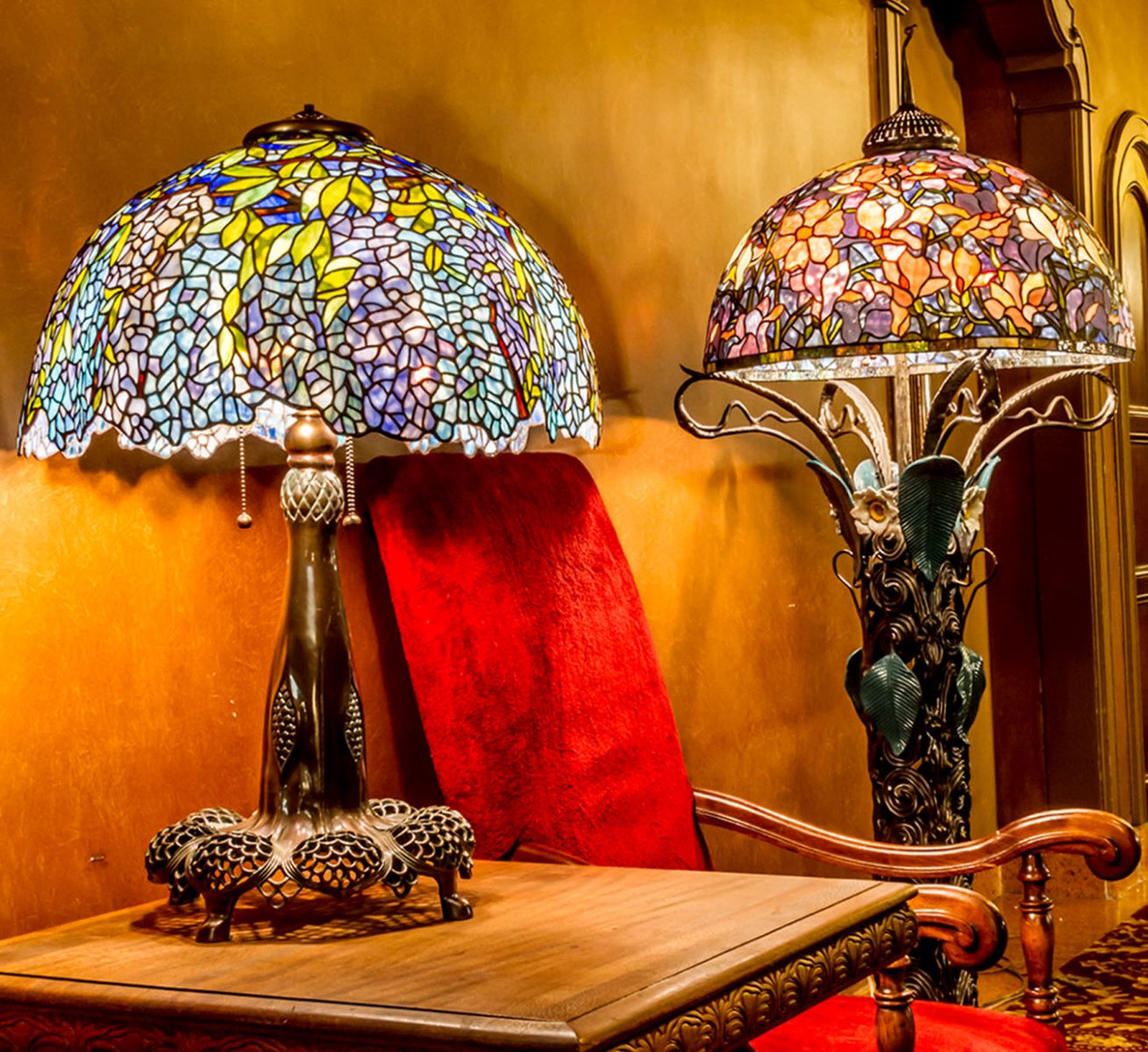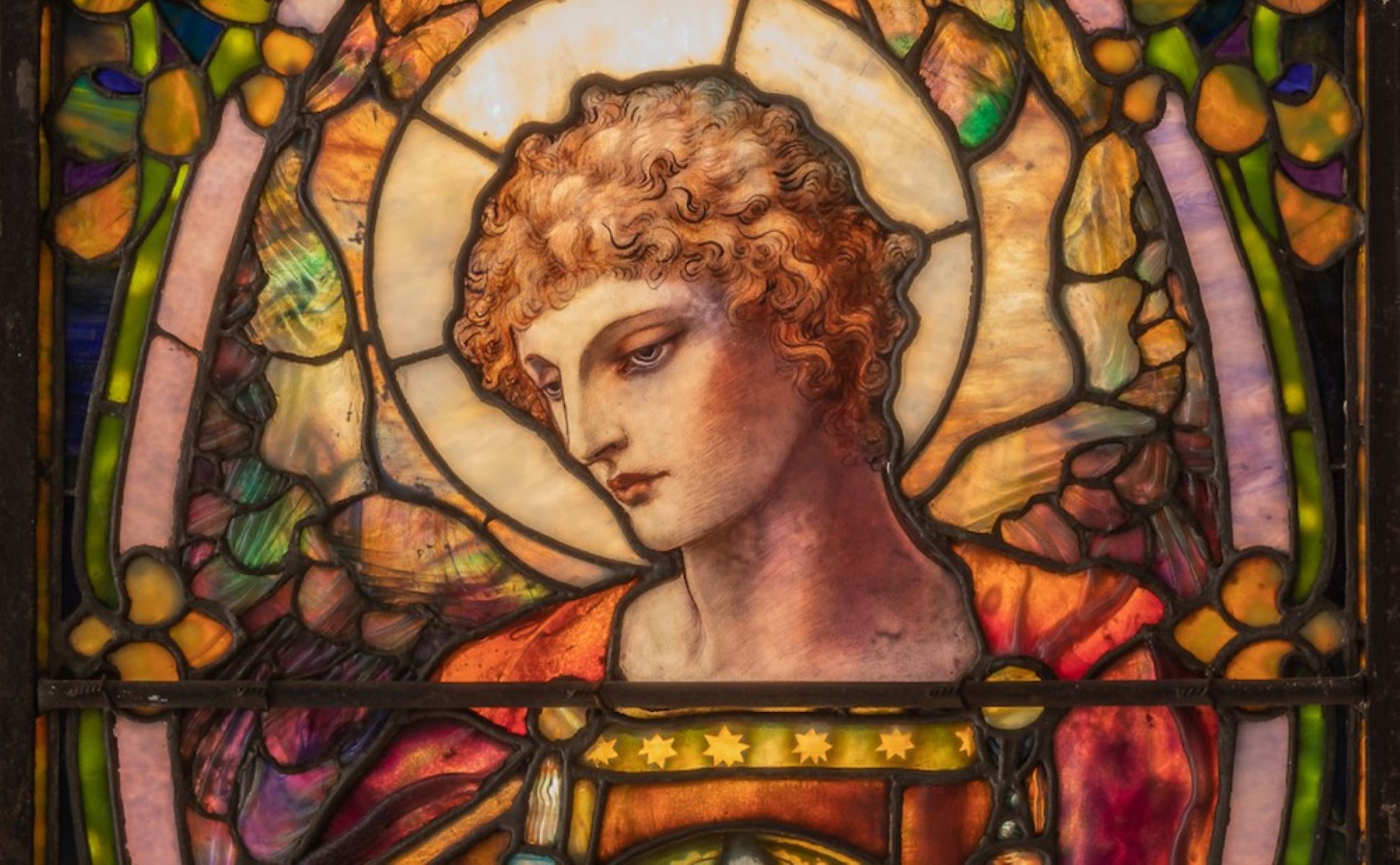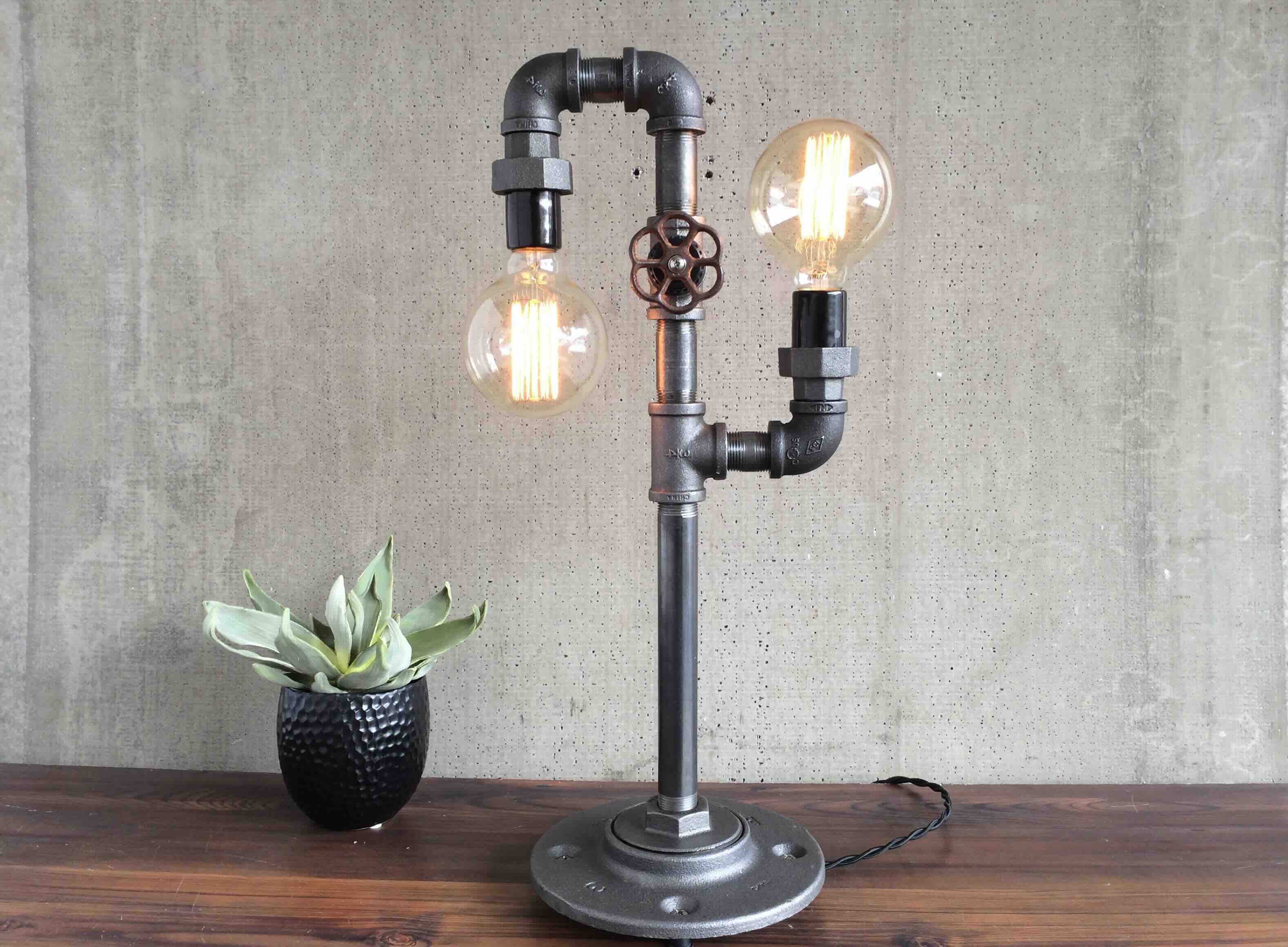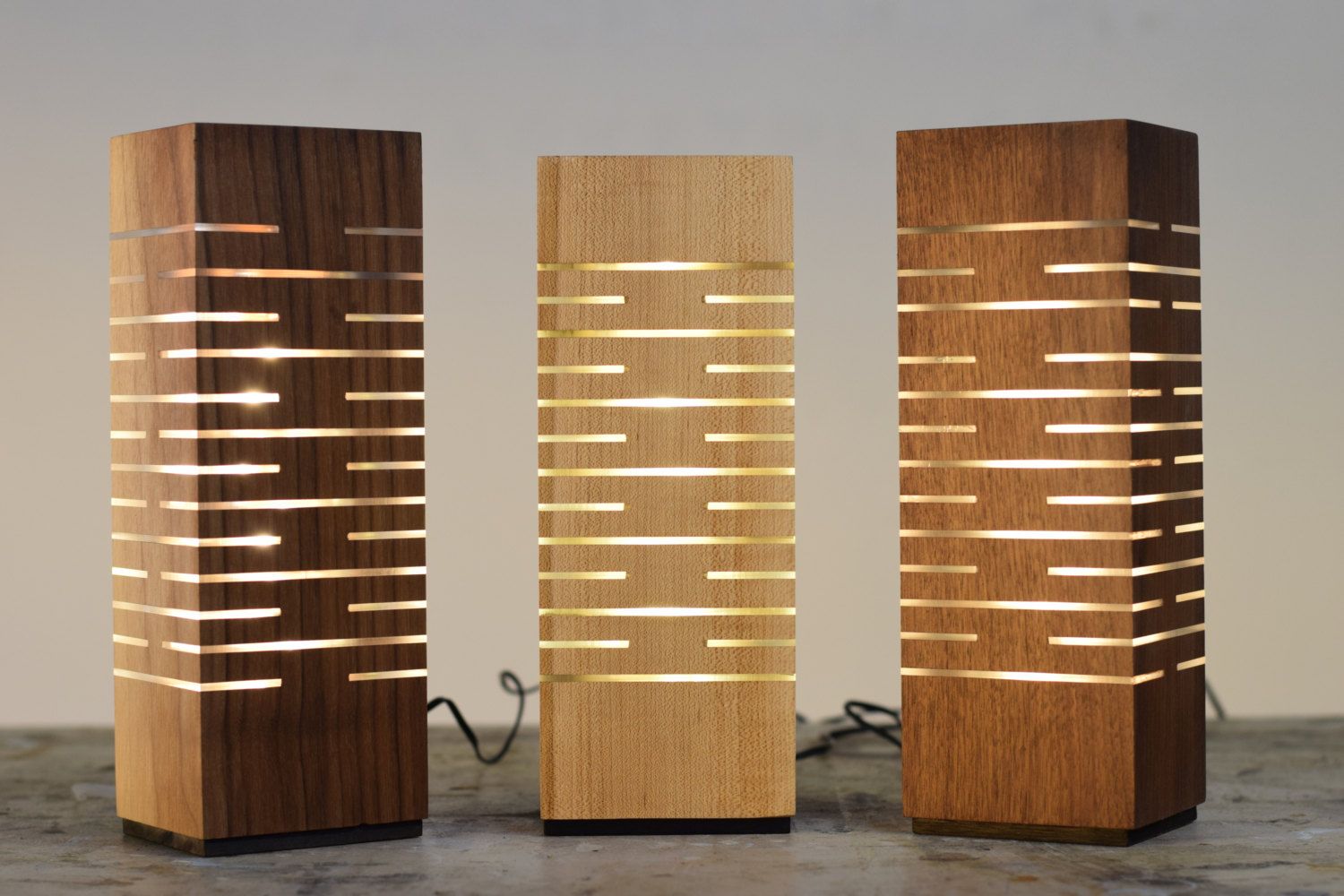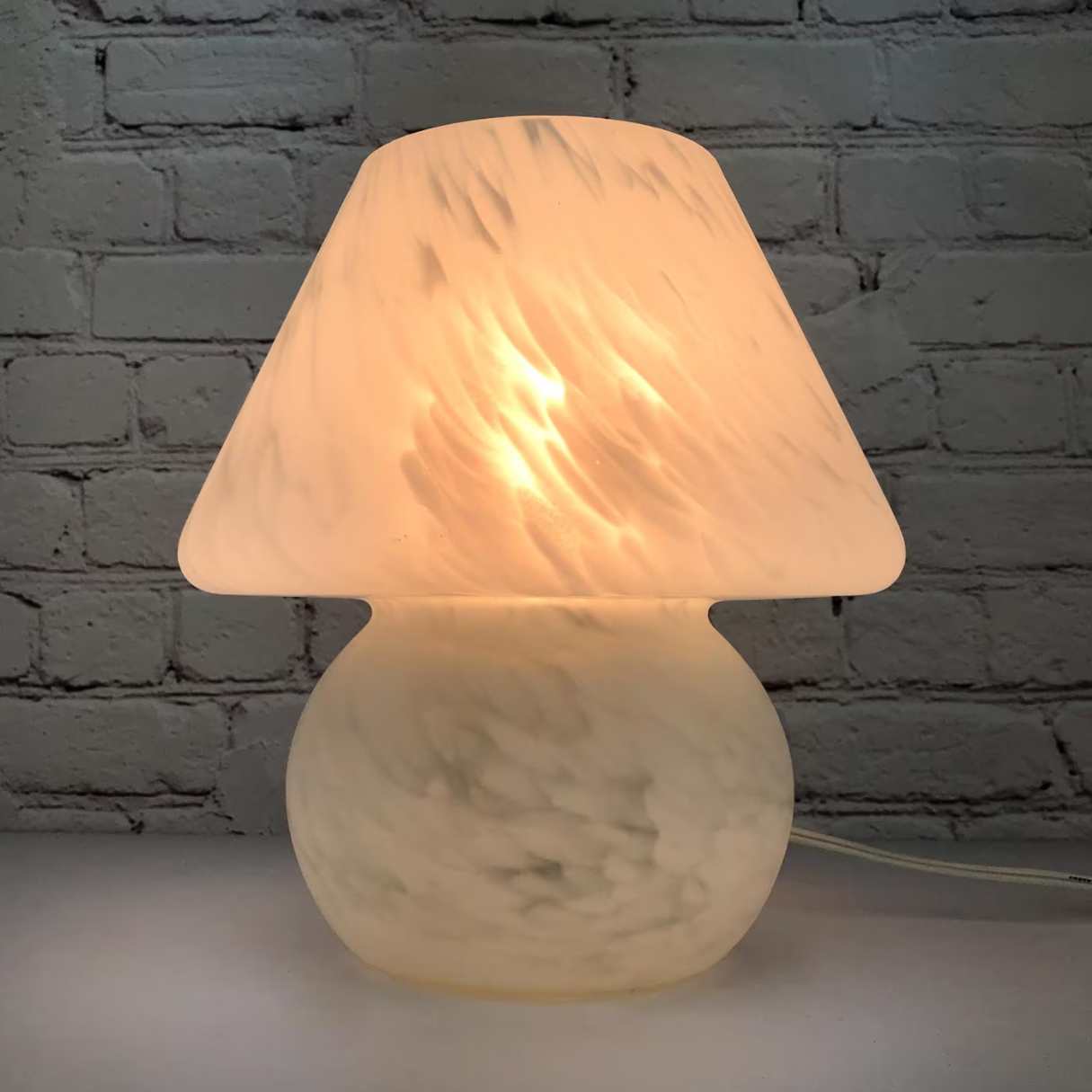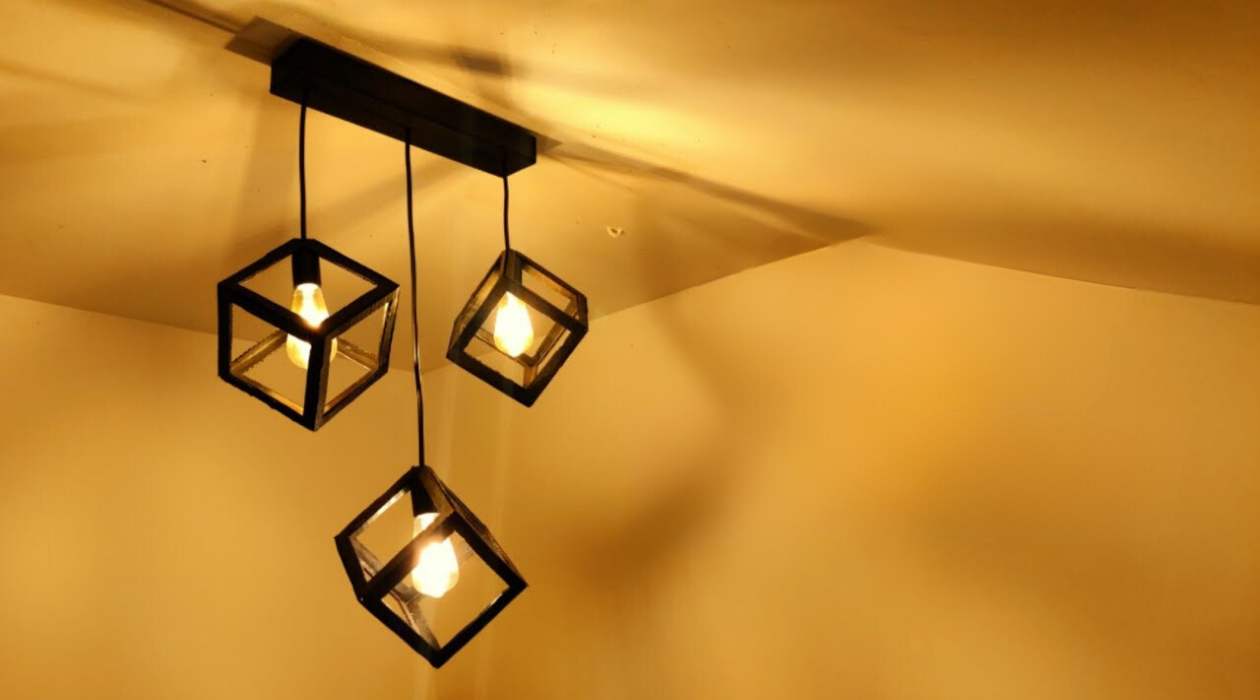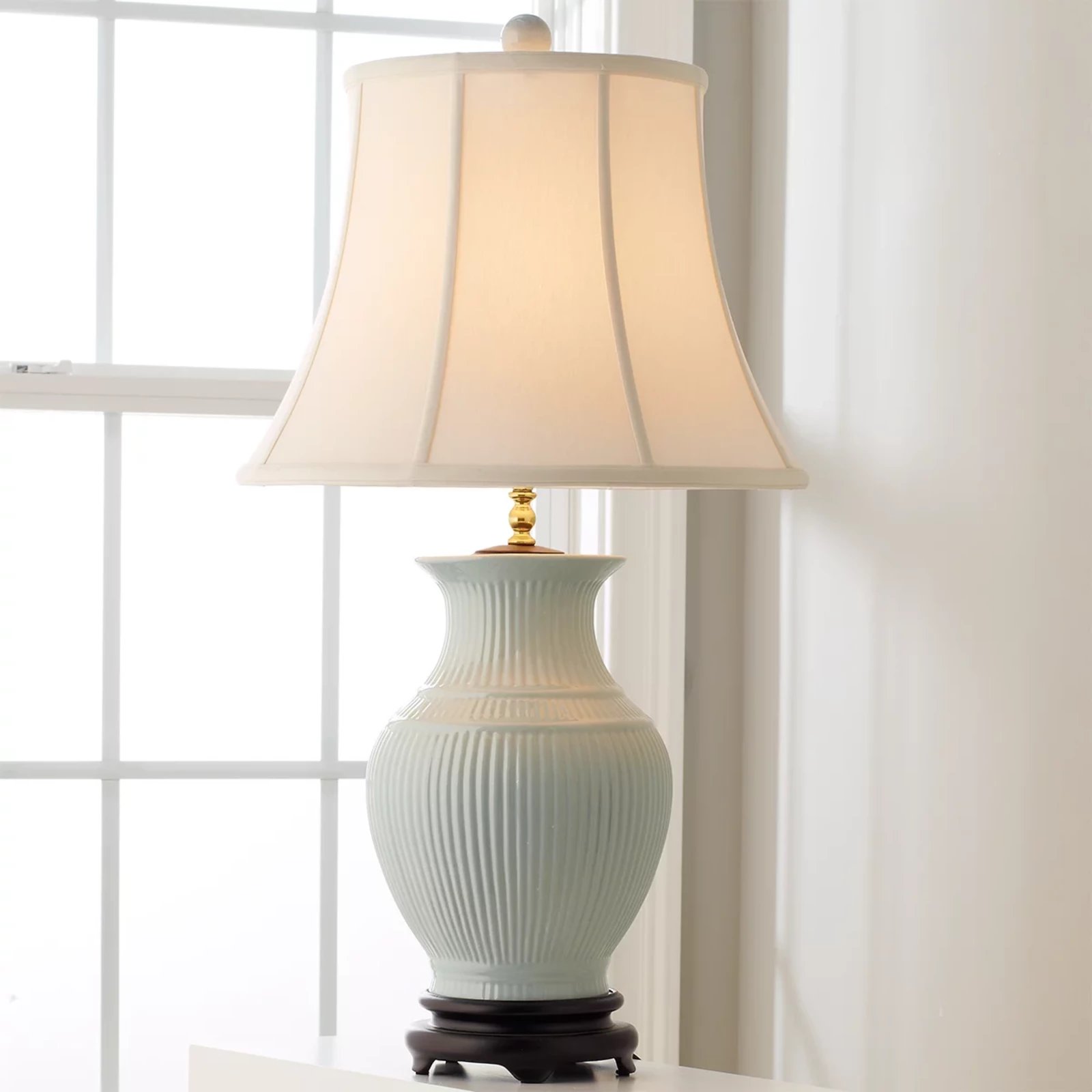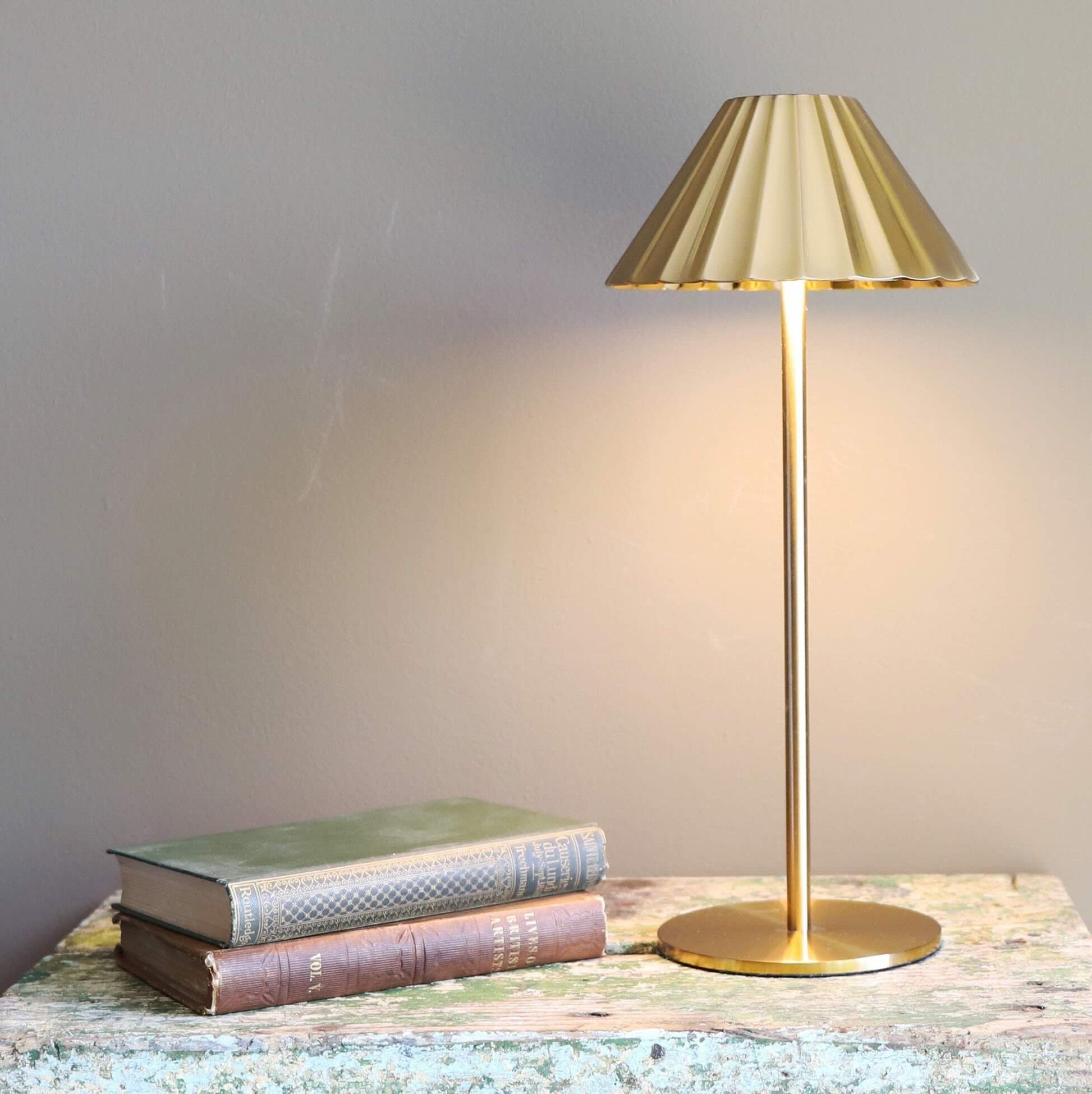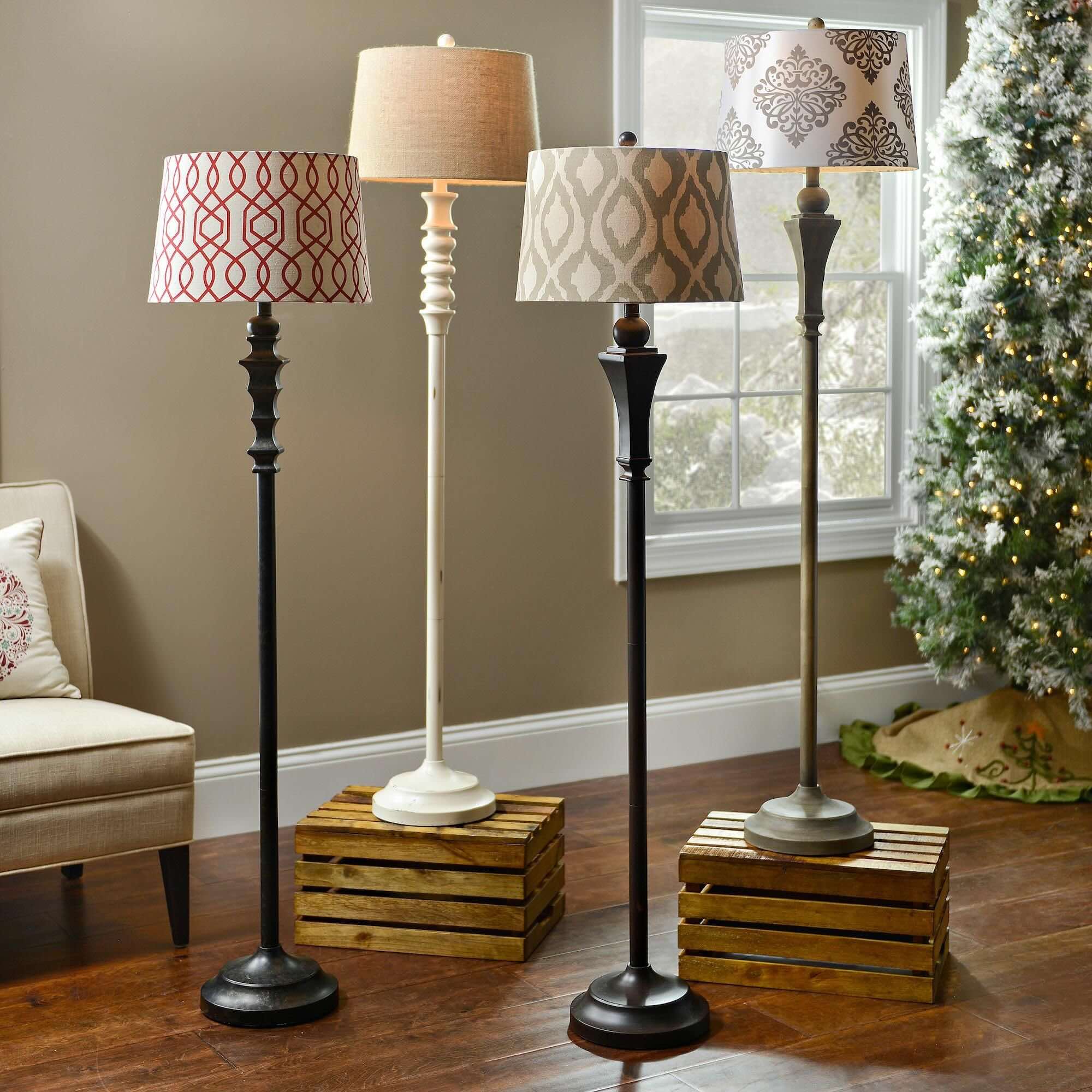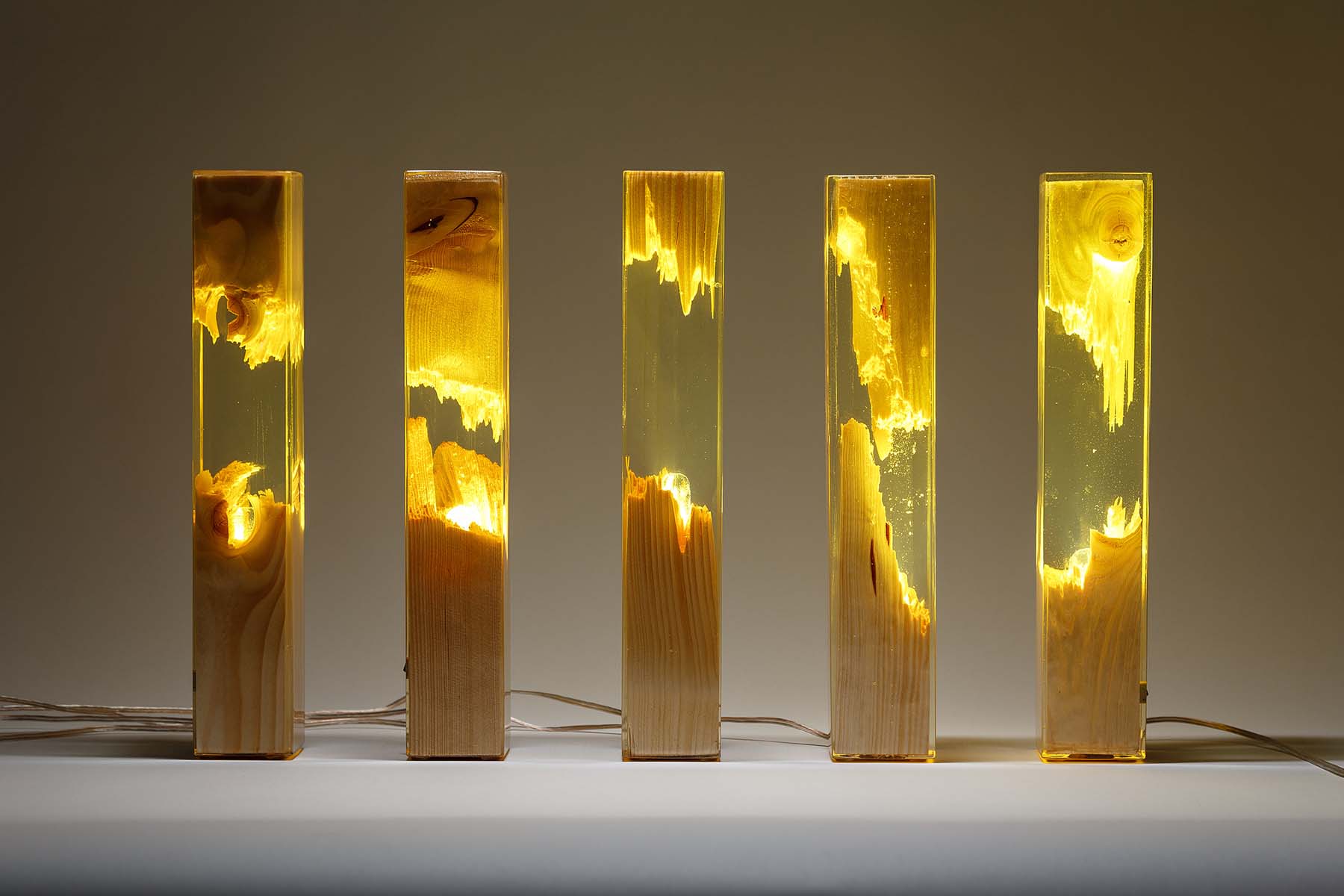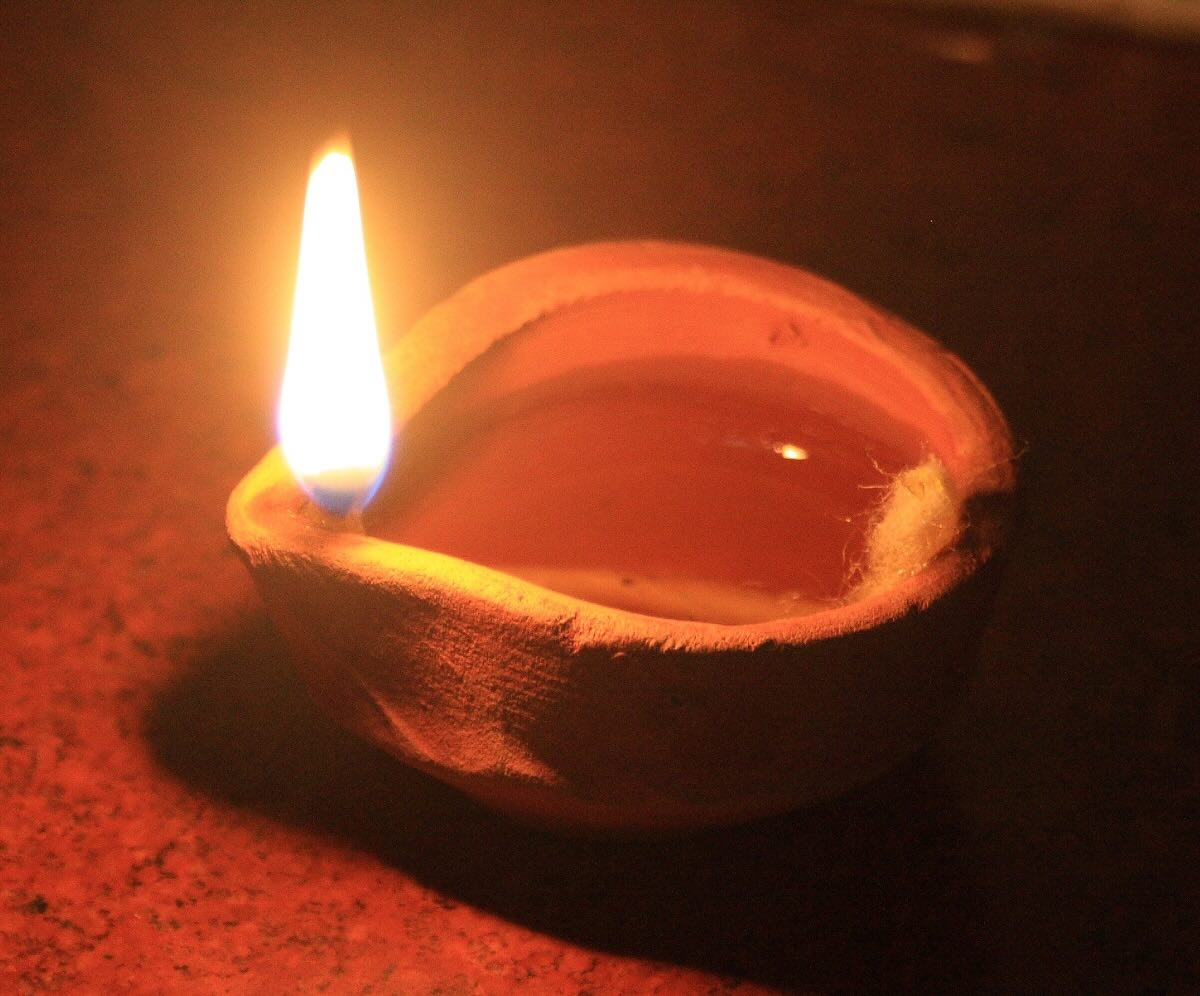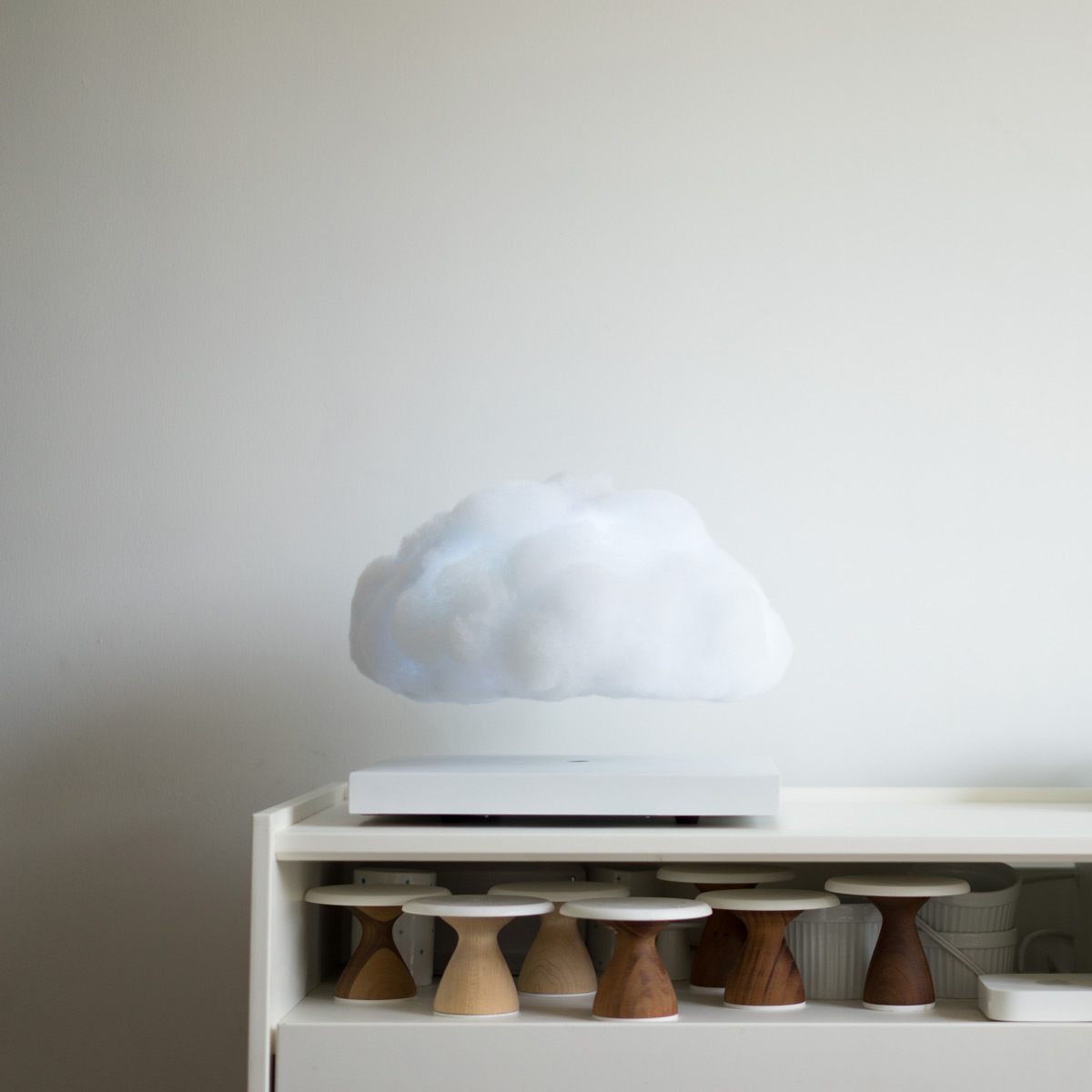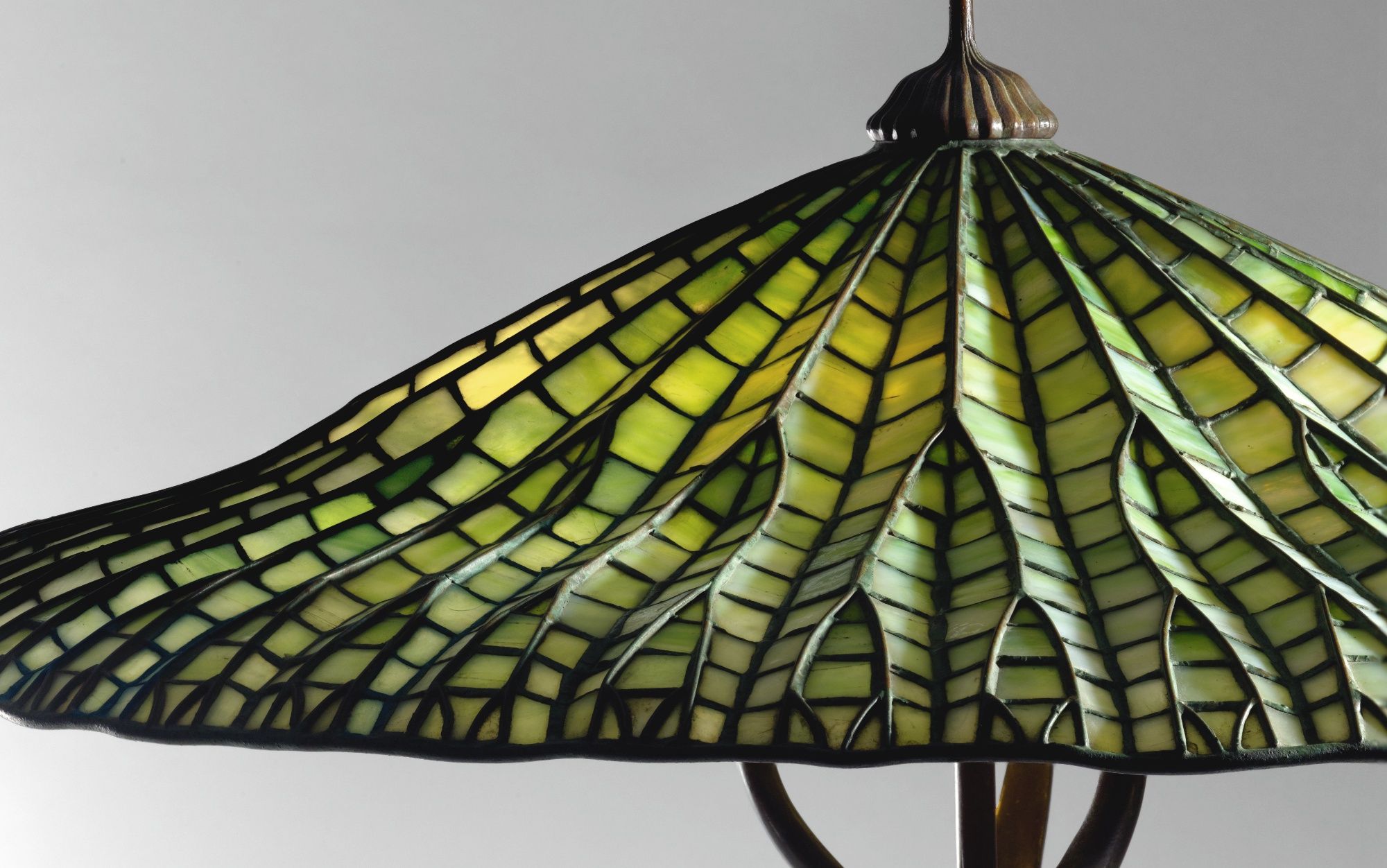

Furniture
How To Make A Tiffany Lamp
Modified: February 6, 2024
Learn how to make a stunning Tiffany lamp with our step-by-step guide. Explore the art of furniture making and create a beautiful piece for your home.
(Many of the links in this article redirect to a specific reviewed product. Your purchase of these products through affiliate links helps to generate commission for Storables.com, at no extra cost. Learn more)
Introduction
Welcome to the world of Tiffany lamps, where beauty and craftsmanship come together to create timeless pieces of art. Tiffany lamps are known for their intricate stained glass designs, rich colors, and warm glow. Whether you are a seasoned DIY enthusiast or a beginner looking for a creative project, making your own Tiffany lamp can be a rewarding and fulfilling experience.
Originally designed and popularized by Louis Comfort Tiffany in the late 19th century, Tiffany lamps have become iconic and highly sought after. Each lamp is handmade, with every piece of stained glass carefully selected and crafted to create a stunning mosaic pattern. The combination of artistry, functionality, and elegance has made Tiffany lamps a symbol of sophistication and style.
In this article, we will guide you through the process of making your own Tiffany lamp. From selecting the lampshade design to wiring the lamp, we will provide step-by-step instructions and helpful tips to ensure that your finished product is a masterpiece.
Before we dive into the crafting process, let’s discuss the materials and tools you will need:
- Glass cutter
- Glass grinder
- Glass foiler or lead came
- Soldering iron
- Solder and flux
- Patinas and finishes
- Lamp base and socket
- Electrical wire
- Wire strippers
- Wire connectors
With these essential materials and tools, you’ll be well-equipped to create your own stunning Tiffany lamp.
In the next section, we’ll explore the first step in the process: choosing a lampshade design. Let’s get started!
Key Takeaways:
- Crafting a Tiffany lamp is a fulfilling journey that combines artistry, skill, and dedication. From selecting the design to wiring the lamp, each step contributes to creating a stunning and functional work of art.
- Your handmade Tiffany lamp is not just a source of light, but a captivating centerpiece that radiates elegance and style. Cherish the artistry and craftsmanship that went into its creation and enjoy the warm and enchanting glow it brings to your space.
Read more: What Is A Tiffany Lamp
Materials and Tools Needed
To embark on your Tiffany lamp-making journey, it’s important to gather all the necessary materials and tools. Here is a list of what you’ll need:
Materials:
- Stained glass: Choose a variety of colors and textures that complement your design. You can find stained glass sheets at specialty glass stores or online.
- Lampshade base: This is the structure that will hold your stained glass pieces together. You can either purchase a pre-made base or create your own using materials like wire or wood.
- Copper foil or lead came: This material helps secure the glass pieces together. Copper foil is more commonly used for smaller projects, while lead came is often used for larger, more intricate designs.
- Solder: Solder is a metal alloy that is melted to join the glass pieces and the foil or came together. Opt for a solder with a high percentage of tin for a stronger bond.
- Flux: Flux is used to clean the metal surfaces before soldering. It helps the solder flow smoothly and evenly.
- Patina or finish: Apply patina or other finishes to give your lampshade a polished and professional look. Patinas come in various colors and can be applied to the solder lines to add depth and character to the lamp.
- Lamp base and socket: Choose a lamp base and socket that fit the size and style of your lampshade. Make sure the base is sturdy enough to support the weight of the shade.
- Electrical wire: You’ll need wire to connect the lamp socket to the power source. Choose a wire gauge suitable for the wattage of your lamp.
- Wire strippers: These are essential for removing the insulation from the electrical wire.
- Wire connectors: Use wire connectors to secure the connections between the lamp socket and the electrical wire.
Tools:
- Glass cutter: A glass cutter is used to score and cut the stained glass pieces to the desired shapes and sizes.
- Glass grinder: A grinder helps smooth the edges of the glass pieces after they have been cut, ensuring a perfect fit and reducing the risk of injury.
- Soldering iron: A soldering iron is used to melt the solder and join the glass pieces and the foil or came together.
- Flux brush: This brush is used to apply flux to the metal surfaces before soldering.
- Copper foil dispenser or lead came stretcher: These tools help hold the foil or came in place while you work.
- Safety glasses: Protect your eyes from glass shards and solder fumes by wearing safety glasses throughout the project.
- Heat-resistant work surface: Use a heat-resistant work surface, such as a soldering mat or a ceramic tile, to protect your table or work area from heat damage.
By gathering these materials and tools, you’ll be well-prepared to begin your Tiffany lamp-making adventure. In the next section, we’ll explore the first step in the process: choosing a lampshade design.
Note: Always exercise caution and follow safety guidelines when working with glass and soldering equipment.
Step 1: Choosing a Lampshade Design
The design of your Tiffany lampshade sets the tone for the entire project. It’s important to choose a design that reflects your personal style and complements your existing décor. Here are some factors to consider when selecting a lampshade design:
1. Theme or Inspiration: Think about the theme or inspiration behind your lamp. Are you drawn to nature, geometric patterns, or abstract designs? Consider incorporating elements that resonate with you, such as flowers, leaves, or intricate geometric shapes.
2. Size and Shape: Determine the appropriate size and shape of the lampshade for your space. Consider the height and width of the lamp base, as well as the overall dimensions of the room. A larger lampshade may be more suitable for a spacious room, while a smaller one may work well on a side table or desk.
3. Complexity: Decide how intricate or detailed you want your lampshade to be. Consider your skill level and the amount of time you want to invest in the project. Simpler designs with fewer glass pieces may be more manageable for beginners, while experienced crafters may enjoy the challenge of more complex patterns.
4. Color Scheme: Think about the color scheme you want to incorporate into your lampshade. Consider the existing color palette in the room where the lamp will be placed. Do you want the lamp to blend in with the surroundings or make a bold statement? Look for stained glass sheets in colors that complement your desired palette.
5. Authenticity: If you’re aiming for an authentic Tiffany lamp, research the original designs created by Louis Comfort Tiffany. Take inspiration from his work and try to recreate his signature style and techniques. You can find books, online resources, and museums dedicated to Tiffany lamps for reference.
Once you have a clear vision of your lampshade design, you can start sketching it out on paper. Use colored pencils or markers to experiment with different color combinations and arrangements. This will give you a visual representation of how the final lampshade will look.
Remember, creating a Tiffany lamp is both an art and a craft. Allow your creativity to flow while considering the technical aspects of the design. In the next step, we will dive into the practical aspects of preparing the lampshade base. Get ready to bring your design to life!
Read more: What Is The Value Of A Tiffany Lamp
Step 2: Preparing the Lampshade Base
Now that you have chosen your lampshade design, it’s time to prepare the base that will serve as the foundation for your Tiffany lamp. The lampshade base provides the structure and stability necessary to hold the stained glass pieces together. Here’s how to prepare the lampshade base:
1. Select a Base: You have the option to purchase a pre-made lampshade base or create your own. If you choose to make your own, consider using materials like wire, wood, or metal. Ensure that the base is strong enough to support the weight of the glass pieces and the lampshade as a whole.
2. Measure and Cut: Measure the circumference and height of the base to determine the size of the lampshade. Use a measuring tape to accurately measure the dimensions. Once you have the measurements, mark them on the base material and use appropriate cutting tools to shape it accordingly.
3. Create a Framework: If you’re using wire or metal for the lampshade base, bend and shape it into the desired form. Make sure the framework provides enough support and stability for the lampshade. Use pliers or bending tools to shape the wire or metal, ensuring that the joints are securely connected.
4. Adjust for the Bulb Socket: Consider the placement of the bulb socket and make necessary adjustments to the base to accommodate it. You may need to create a hole or opening in the base to fit the socket through. Ensure that the socket is positioned securely and aligned properly for safe and efficient lighting.
5. Secure the Base: Once you have the desired shape and size, secure the lampshade base in place. If you’re using a pre-made base, follow the manufacturer’s instructions for attachment. If you’re creating your own base, use adhesive or fasteners to secure it to a platform or base plate.
6. Finishing Touches: Smooth out any rough edges or surfaces on the lampshade base to prevent accidents or injury. You can use sandpaper or a file to gently smooth the edges. Additionally, consider painting or staining the base to match your desired aesthetic. Opt for colors or finishes that enhance the overall look of your lampshade.
By carefully preparing the lampshade base, you are setting the stage for the beauty and functionality of your Tiffany lamp. Once the base is ready, you can move on to the exciting process of cutting and fitting the stained glass pieces. In the next step, we will explore this intricate task in detail. Get ready to unleash your creativity!
Step 3: Cutting and Fitting the Stained Glass Pieces
Now that you have your lampshade base prepared, it’s time to embark on the creative process of cutting and fitting the stained glass pieces. This step requires precision and attention to detail to ensure a cohesive and visually appealing design. Here’s how to cut and fit the stained glass pieces for your Tiffany lamp:
1. Gather your Materials: Arrange all the necessary materials for this step, including the stained glass sheets, glass cutter, glass grinder, safety goggles, and a clean workspace. Ensure that the glass cutter is sharp and in good condition.
2. Create a Pattern: Using the design you selected in step 1 as a guide, create a pattern for the stained glass pieces. Transfer the design onto a piece of sturdy cardboard or plastic. The size and shape of each glass piece should correspond to the pattern.
3. Score and Break: Carefully score the glass along the lines of the pattern using the glass cutter. Apply even pressure and make a smooth, continuous line. Once the glass is scored, use gentle pressure to break it along the scored line. Be sure to wear safety goggles to protect your eyes from any glass shards.
4. Smooth the Edges: After cutting the glass pieces, use a glass grinder to smooth the edges. This will ensure a perfect fit and minimize the risk of injury. Hold the glass against the grinder while applying gentle pressure, moving it in a circular motion to smooth the edges. Take your time and make smooth, even strokes.
5. Fit the Glass Pieces: Begin fitting the glass pieces onto the lampshade base, following your pattern. Use copper foil or lead came to wrap around the edges of each glass piece, securing them in place. For smaller projects, copper foil is more commonly used, while lead came is preferred for larger projects.
6. Check the Fit: As you progress, periodically check the fit of the glass pieces on the lampshade base. Ensure that they align properly and offer a seamless appearance. Adjust the size or shape of the glass pieces as needed to achieve the desired fit.
7. Plan for Gaps: Depending on your lampshade design, you may intentionally create small gaps between the glass pieces. These gaps will be filled with solder later in the process. Make sure to leave enough space for the solder to flow and adhere properly.
8. Make Necessary Adjustments: Throughout the fitting process, you may encounter minor discrepancies or overlapping. Use glass pliers or a glass cutter to trim or adjust any glass pieces as needed. Take your time and work carefully to achieve a precise fit.
Cutting and fitting the stained glass pieces is a critical step in the creation of your Tiffany lamp. Attention to detail and patience are key to ensuring a cohesive and beautiful design. In the next step, we will explore the techniques of foiling or leading the glass pieces to prepare them for joining. Get ready to take your project to the next level!
Step 4: Foiling or Leading the Glass Pieces
With the stained glass pieces cut and fitted onto the lampshade base, it’s time to move on to the next step: foiling or leading the glass pieces. This process is crucial for securely joining the glass pieces together and adding stability to your Tiffany lamp. Here’s how to foil or lead the glass pieces:
1. Foiling Method:
– Begin by cleaning the surface of each glass piece with a gentle glass cleaner to remove any dirt or debris. This will ensure proper adhesion of the foil.
– Cut a piece of copper foil to the length of each glass piece’s edge. The width of the foil should be about twice the thickness of the glass.
– Place the foil along the edge of the glass, ensuring that it sticks evenly and securely. Use a fid or a wooden tool to smooth out any wrinkles or bubbles in the foil.
– Fold the excess foil over the edge of the glass, pressing it firmly to secure it in place. Repeat this process for all the glass pieces, covering each edge with foil.
– Once all the glass pieces are foiled, use a fid or burnisher to burnish the foil. This helps to ensure a strong bond between the foil and the glass.
2. Leading Method:
– Clean the surface of each glass piece to remove any dirt or debris, just like with the foiling method.
– Measure and cut lead came strips to fit along the edges of the glass pieces. Ensure that the lengths of the lead came strips match the dimensions of each glass piece’s edge.
– Press the lead came firmly against the glass, ensuring that it sits snugly. Use horseshoe nails or other small nails to temporarily hold the came in place.
– Use lead nippers to cut the lead came at the corners and where the pieces meet. Make sure the cuts are clean and precise.
– Once all the glass pieces are surrounded by lead came, use soldering flux to clean the metal surface of the lead came. Apply flux using a brush or cotton swab.
– Solder each joint where the lead came meets using a soldering iron and solder. This will create a secure bond and strengthen the structure.
Whether you choose the foiling or leading method, ensure a tight and secure fit between the glass and the copper foil or lead came. This step is crucial for the structural integrity of your lamp. Take your time and be meticulous in your work.
In the next step, we will explore the process of soldering the glass pieces together, bringing your lampshade one step closer to completion. Get ready for the exciting part of joining the pieces together!
Step 5: Soldering the Glass Pieces Together
With the glass pieces foiled or leaded and securely in place, it’s time to move on to the next step: soldering the glass pieces together. Soldering creates a strong and permanent bond between the glass and the foil or lead came, giving your Tiffany lampshade its structural integrity. Here’s how to solder the glass pieces together:
1. Prepare your Workspace:
– Ensure you have a well-ventilated area for soldering. Open windows or use a fan to circulate air and dissipate fumes.
– Set up your soldering iron on a heat-resistant surface, such as a soldering mat or ceramic tile.
– Make sure you have easy access to your solder and a container for flux.
2. Apply Flux:
– Using a flux brush or cotton swab, apply flux generously to the solder lines where the glass pieces meet. Flux helps clean the metal and promotes smooth solder flow.
3. Heat the Soldering Iron:
– Plug in your soldering iron and allow it to heat up to the appropriate temperature. The ideal temperature for soldering stained glass is around 600°F (315°C).
4. Begin Soldering:
– Hold the tip of the soldering iron against the solder line, making contact with both the copper foil or lead and the solder. Allow the solder to melt and flow along the solder line.
– Move the soldering iron along the solder line, applying enough heat to keep the solder melted and create a smooth, even bead. Be careful not to stay in one spot for too long, as this can overheat and damage the glass.
– Ensure that the solder fully covers the copper foil or lead came and forms a strong bond between the glass pieces. The solder should create a raised line on both sides of the solder joint.
5. Clean and Smooth:
– Once the solder has cooled and solidified, use a damp sponge or cloth to wipe away any excess flux and residue. This will give your lampshade a clean and polished appearance.
– If there are any rough or uneven spots in the solder, use a soldering iron or a soldering iron with a chisel tip to gently melt and smooth the solder surface.
6. Repeat and Touch-Ups:
– Continue soldering all the solder lines on your lampshade, working carefully and systematically. Ensure that each joint is strong and secure.
– Check for any areas that may need touch-ups or additional solder. Add more solder as needed to strengthen the joints and create a cohesive look.
Soldering the glass pieces together is a crucial step that brings your Tiffany lampshade to life. Take your time, work with precision, and pay attention to detail to achieve strong and beautifully soldered joints. In the next step, we will explore applying a patina or finish to the soldered lampshade, adding depth and character to your creation. Get ready to add those final touches!
When making a Tiffany lamp, be sure to carefully select and cut the glass pieces to ensure they fit together seamlessly. Take your time and pay attention to detail for a professional-looking finished product.
Read more: How To Tell If It’s A Tiffany Lamp
Step 6: Applying a Patina or Finish to the Soldered Lampshade
After soldering the glass pieces together, it’s time to enhance the visual appeal of your Tiffany lampshade by applying a patina or finish. This step adds depth and character to the solder lines, giving your lampshade a professional and polished look. Here’s how to apply a patina or finish to the soldered lampshade:
1. Clean the Soldered Joints:
– Before applying the patina or finish, ensure that the soldered joints are clean and free from any residue or dirt. Use a damp cloth or sponge to wipe away any debris.
2. Choose your Patina or Finish:
– Decide on the color and type of patina or finish you want to use. Patinas come in various shades, such as black, copper, or antique. There are also finishes that can give a glossy or matte appearance to the solder lines.
– Ensure that the patina or finish you choose is specifically designed for stained glass applications.
3. Apply the Patina or Finish:
– Wear protective gloves to prevent any skin contact with the patina or finish.
– Shake or stir the patina or finish well to ensure an even consistency.
– Using a small brush or sponge applicator, carefully apply the patina or finish to the solder lines. Follow the manufacturer’s instructions for application techniques and drying times.
– Ensure that you cover all the solder lines evenly, giving your lampshade a consistent and cohesive appearance.
4. Let it Set and Dry:
– Allow the patina or finish to set and dry according to the manufacturer’s instructions. This may take several hours or overnight, depending on the product used.
– Avoid touching or disturbing the lampshade during this time to prevent smudging or smearing of the patina or finish.
5. Buff and Polish:
– Once the patina or finish has dried, use a soft cloth or paper towel to gently buff the soldered areas. This will remove any excess patina or finish and enhance the shine and smoothness of the solder lines.
– Take care not to scratch or damage the glass pieces while buffing.
6. Optional Sealing:
– If desired, you can further protect the patina or finish by applying a sealant or wax specifically designed for stained glass. This will help preserve the appearance and longevity of the patina or finish.
By applying a patina or finish to the soldered lampshade, you will add depth and richness to the overall design. This step brings the intricate details of your Tiffany lamp to life and highlights the craftsmanship that went into its creation.
In the next step, we will guide you through the process of assembling the lampshade with the base, getting you one step closer to completing your own stunning Tiffany lamp. Let’s continue the journey!
Step 7: Assembling the Lampshade and Base
Assembling the lampshade with the base is an exciting step as it brings your Tiffany lamp closer to its final form. This step involves carefully attaching the lampshade to the base to create a seamless and stable structure. Here’s how to assemble the lampshade and base:
1. Prepare the Lamp Base:
– Ensure that your lamp base is clean and free from any dust or debris. Wipe it down with a soft cloth or paper towel to remove any dirt.
2. Check the Fit:
– Place the lampshade onto the base to check the alignment and fit. Ensure that the lampshade sits securely on the base and is centered properly.
3. Secure the Lampshade:
– Depending on the design and structure of your lampshade, there are various methods to secure it to the base.
– If your lampshade has fittings or brackets, follow the manufacturer’s instructions for attaching them to the base securely.
– If your lampshade does not have pre-made fittings, you can use epoxy or a strong adhesive to bond the lampshade to the base. Apply the adhesive carefully and ensure that the bond is strong and stable.
4. Let it Cure:
– If using adhesive, allow enough time for it to cure and bond the lampshade to the base securely. Follow the manufacturer’s instructions for the recommended curing time.
5. Test the Stability:
– Once the adhesive has cured, test the stability of the lampshade by gently shaking or moving the lamp. Ensure that the lampshade is firmly attached to the base and does not wobble or detach.
6. Make Adjustments:
– If necessary, make any necessary adjustments to ensure a tight and secure fit between the lampshade and the base. You can use additional adhesive or other securing methods, such as screws or brackets, to reinforce the attachment.
7. Clean and Polish:
– Once the lampshade is securely attached to the base, clean any fingerprints or smudges from the glass pieces using a soft cloth or glass cleaner.
– Use a gentle glass cleaner or a mixture of mild soap and water to clean the base and remove any adhesive residue. Wipe it dry with a soft cloth.
By carefully assembling the lampshade with the base, you complete the structural component of your Tiffany lamp. It’s time to move on to the next step and wire the lamp to bring it to life. Get ready for the electrifying process that adds functionality to your beautiful creation!
Step 8: Wiring the Tiffany Lamp
Wiring the Tiffany lamp is a crucial step that brings functionality and illumination to your beautiful creation. It’s important to handle the wiring process with care to ensure safety and proper functionality. Here’s how to wire the Tiffany lamp:
1. Gather the Necessary Materials:
– Lamp cord with plug: Choose a lamp cord that is suitable for the wattage and size of your lamp. The plug should be compatible with your electrical outlet.
– Lamp socket: Select a socket that matches the style and size of your lamp. It should also accommodate the wattage of the bulb.
– Socket cap and harp: These components hold the socket in place and provide support for the lampshade.
– Electrical wire connectors: These connectors are used to connect the lamp cord to the socket.
2. Turn off the Power:
– Before you begin the wiring process, switch off the power in the room or unplug any nearby electrical devices. This ensures your safety as you work with the wiring.
3. Thread the Lamp Cord:
– Starting from the bottom of the lamp base, thread the lamp cord through the hollow stem of the lamp base. Pull it up gradually, leaving enough cord at the top to connect to the socket.
4. Attach the Socket:
– Separate the two halves of the socket by unscrewing the bottom portion. Slide the socket cap over the cord and push it up towards the top of the cord.
– Strip about ½ inch (1.27 cm) of insulation from the ends of the wire on the lamp cord.
– Connect the wires from the lamp cord to the corresponding terminals on the socket. Follow the manufacturer’s instructions for proper wire connections.
– Once the wires are connected, slide the socket shell over the socket cap and align it with the bottom portion. Screw them together securely.
5. Secure the Socket and Harp:
– Place the socket and the attached harp into the socket base of the lampshade. Adjust the position of the harp to ensure that the lampshade sits at the desired height and angle.
– Secure the harp in place by tightening the harp finial at the top.
6. Test the Wiring:
– Before attaching the lampshade, plug in the lamp and test the wiring. Flip the switch to ensure that the lamp turns on and off properly. If the lamp doesn’t turn on, double-check the wiring connections and make any necessary adjustments.
7. Adjust and Straighten the Lampshade:
– Once you’ve confirmed that the wiring is working properly, adjust the positioning of the lampshade to ensure it sits straight and level on the lamp base. Make any necessary adjustments to the harp or socket position.
8. Finalize the Wiring:
– After ensuring that everything is in place, unplug the lamp and secure the socket shell by screwing it tightly onto the socket cap. This ensures that the wiring stays in place and prevents any potential hazards.
As you wire your Tiffany lamp, always prioritize safety by following electrical codes and guidelines. If you’re unsure of any step or unfamiliar with electrical wiring, it’s best to consult a professional electrician.
With the lamp wired and ready, you’re almost done! In the next and final step, we’ll cover testing and adding the finishing touches to complete your Tiffany lamp. Get ready to illuminate your space with your own handmade masterpiece!
Step 9: Testing and Finishing Touches
Congratulations! You’re in the final step of completing your Tiffany lamp. In this step, you’ll conduct tests to ensure the lamp is functioning properly and add the finishing touches that will enhance its overall appearance. Here’s how to test and add those final touches:
1. Testing the Lamp:
– Double-check that the lamp is unplugged before proceeding with the testing process.
– Insert a suitable light bulb into the socket, ensuring it matches the recommended wattage for the lamp. Screw it in securely.
– Plug the lamp into a working electrical outlet.
– Flip the switch to test whether the lamp turns on and off smoothly. If there are any issues, double-check the wiring connections and troubleshoot accordingly.
– Ensure that the lampshade sits securely on the base, and the light is evenly distributed.
2. Finishing Touches:
– Clean and polish the entire lamp to remove any fingerprints, residue, or marks accumulated during the construction process. Use a soft, lint-free cloth or a gentle glass cleaner to bring out the lamp’s luster.
– Inspect the lampshade for any loose glass pieces or jagged edges. If necessary, apply a small amount of adhesive to secure loose pieces and smooth any sharp edges to prevent injuries.
– Take a step back and admire your creation. Assess the overall appearance of the lamp and make any final adjustments to the positioning, straightness, or angle of the lampshade.
– Consider adding a decorative finial to the top of the lampshade. Finials can be made of various materials such as metal, glass, or crystal, and can add a touch of elegance to your lamp.
3. Placement and Enjoyment:
– Select a suitable location to showcase your Tiffany lamp. Choose an area where it can be seen and appreciated. Consider factors like lighting, room decor, and furniture arrangement to ensure it becomes a focal point in the room.
– Experiment with different bulb options to achieve your desired ambiance. For a softer, warmer glow, consider using a lower wattage or a bulb with a warmer color temperature. LED bulbs are energy-efficient and have a long lifespan.
– Regularly clean and dust your Tiffany lamp to maintain its beauty. Avoid using abrasive cleaners or harsh chemicals that could damage the glass.
By testing the lamp and applying those final finishing touches, you’ll ensure that your Tiffany lamp is not only visually stunning but fully functional as well. Now, all that’s left to do is sit back, relax, and bask in the warm and enchanting glow of your handmade creation.
Remember to cherish the artistry and craftsmanship that went into making your Tiffany lamp. It is not only a beautiful addition to your space but also a testament to your creativity and skill. Enjoy the beauty and ambiance it brings to your environment for years to come.
Read also: 10 Incredible Tiffany Lamp for 2024
Conclusion
Congratulations on completing your journey to create your very own Tiffany lamp! Through careful selection, cutting, fitting, foiling or leading, soldering, and wiring, you have transformed a collection of materials into a stunning and functional work of art. Your Tiffany lamp showcases your creativity, skill, and dedication to the craft.
Crafting a Tiffany lamp is not only a fulfilling endeavor but also an opportunity to pay homage to the rich history and legacy of these iconic pieces. From the intricate stained glass design to the careful soldering and wiring, each step in the process contributes to the lamp’s beauty and functionality.
Your lamp is not just a source of light; it is a statement piece in your home, radiating elegance and style. The combination of vibrant colored glass, expert craftsmanship, and a thoughtfully chosen design makes your Tiffany lamp a captivating centerpiece.
As you gaze upon your finished creation, take a moment to appreciate the intricate details and the unique character it brings to your space. The warm glow emanating from the lampshade casts an enchanting ambiance, creating a cozy and inviting atmosphere.
Remember, a Tiffany lamp is more than just an object—it is a conversation starter, a piece of art that tells a story. Share the story of your creation with friends and guests, and invite them to marvel at its beauty and craftsmanship.
Take pride in the fact that you have not only followed in the footsteps of Louis Comfort Tiffany but also added your own personal touch to the creation. Your Tiffany lamp showcases your artistic vision and the time and care you put into perfecting each detail.
Now, sit back, relax, and enjoy the mesmerizing light and enchanting patterns your Tiffany lamp creates. Let its radiance infuse your space with a touch of elegance and sophistication. Every time you switch it on, you’ll be reminded of the journey you embarked upon to bring this masterpiece to life.
So, let your Tiffany lamp illuminate not just your room but also your creativity and passion for the art of furniture-making. Embrace the artistry and craftsmanship that went into its creation and continue to explore the world of furniture-making and design.
Now that you’re equipped with the knowledge and experience of creating a Tiffany lamp, you can embark on new projects, refine your skills, and continue to enhance your living space with your own handcrafted pieces.
Congratulations once again on completing this remarkable artistic journey and enjoy the beauty and splendor of your handcrafted Tiffany lamp!
Frequently Asked Questions about How To Make A Tiffany Lamp
Was this page helpful?
At Storables.com, we guarantee accurate and reliable information. Our content, validated by Expert Board Contributors, is crafted following stringent Editorial Policies. We're committed to providing you with well-researched, expert-backed insights for all your informational needs.
